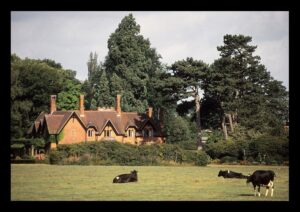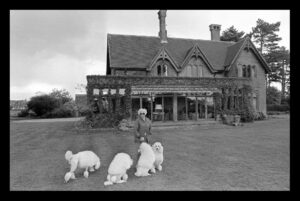The Spring, 28th April 2020 165/54 likes/comments
Nikki Bagworth requested the history of The Spring; it is of course the people that live in it that creates the history of a house, and The Spring has had several notable families contributing to Kenilworth and its surrounds.
Samuel Carter, had made his money in the Coventry textile industry and lived at The Spring Farm in about 1870, although it is uncertain (to me at least) which building it was he lived in. Such was his standing in Kenilworth that when he was elected as the MP for Coventry in 1868, the church bells of St Nicholas were rung in celebration.
In 1870, his son Alexander built for himself a new house called The Spring, that which is there today. When asked, Alexander always made its grounds available for the recreation and amusement of the working classes. “He was foremost in carrying out any good work in his quiet unassuming gentlemanly manner and especially in all matters tending to the welfare of the working classes.” He then took it upon himself to fund the leasing of a house in what is now The Square, and the considerable alterations and furnishings it needed, to turn it into the town’s first Working Men’s Club. It opened on 20th December 1875; the building is most probably that in use today by Boothroyds.
Most of the members at the club, more than 70, worked at the nearby tannery, so when the tannery failed in the summer of 1885, it was no surprise that the club folded within weeks. Its originator and President, Alexander Carter, had died in November 1878 aged only 43 and is buried at St Nicholas.
Moving to The Spring in late 1881 was William Evans and his family; if ever there was a case of the right man being in the right place at the right time, this was it for Kenilworth, more of which in a minute. He was born in Coventry in 1825, and practised as a solicitor until 1856 when he became a partner in the firm Ingleby, Wragge and then Evans. The firm’s high-class clients included the Birmingham Canal Company, Lloyd’s Bank, Birmingham Dudley & District Bank, and the South Staffordshire Waterworks Company. Evans also became the auditor and Parliamentary agent for the London & North Western Railway at which he particularly excelled; he was a clever man. He retired and came to live at The Spring in Kenilworth aged 56, arriving in late 1881, and diverted his energies for the good of his new hometown being elected to the Local Board (the Council of the day) in early 1882.
It was just at this time that the Earl of Clarendon was trying to sell his Abbey Fields estate to builders; the Board wanted to buy the fields to use for recreation but simply didn’t have the money. William Evans, using his years of experience in land matters put together a scheme whereby the Board took out a loan to buy just 40 acres, a syndicate (including Evans) bought much of the rest, and 15 acres were bought by public donation. The Board could then rent the fields out for livestock grazing and the money received from that would pay off the loan; as it balanced, the Board effectively got their park without spending a penny; William Evans is the man to thank for us having the Abbey Fields today, and to top it up, his daughter Gertrude later donated more acreage from the land the syndicate had owned. I have long thought a road in Kenilworth should be named Evans in their memory.
William Evans died in 1907, Gertrude moved to Clinton House, and into The Spring moved Percy Martin.
A chance meeting whilst American born (in 1871) Martin was holidaying in England saw him become Works Manager at the then small car manufacturer Daimler in 1901. The following July he married Alice Helen Heublein, also from the USA; they had a son and a daughter, Jack and Helen. His, and the company’s, subsequent rapid rise saw Daimler amalgamate with munitions manufacturer Birmingham Small Arms, and he became Manager Director of the two concerns in 1910, by when the family were living at The Spring.
In the Great War he was appointed as a key member of the Ministry of Munitions and also appointed Controller of Internal Combustion Engines. He became Chairman of Daimler and remained on the Board of BSA until the mid-1930s, at which time they employed over 11,000 workers.
His son Jack joined his mother’s ‘family business’ of GF Heublein, and in the late 1930s he purchased a small Vodka distillery in Connecticut; after the Second World War he marketed the product by the name of the man whose distilling process it used – Smirnoff. Jack himself created a collection of cocktails including the Screwdriver and Bloody Mary, and the rest, as they say, is history.
Spinster Helen Martin continued to live at The Spring after her parents’ death and became well known in local charitable circles. As did Alexander Carter a century before, she used to open up her grounds to locals annually for inspection and a small donation for a local good cause, an act that endeared her to many. It was not until after her death in 1988 that it became known that she had donated the equivalent of £28 million pounds towards various arts complexes at Warwick University. Helen is included on the Portrait Bench sculpture on the Greenway branch to the University.
The colour photograph of The Spring is one I took in the mid 1990s; the other of Helen Martin and her poodles outside their home is taken from the Coventry Live website.

